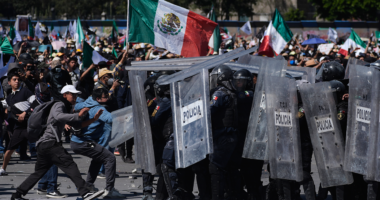Share this @internewscast.com
Pollo alla cacciatore, or huntsman’s chicken (let us gloss over what kind of hunter comes home with a chicken), is more of a general concept than a specific recipe; as Marcella Hazan explains: “Since there has always been a hunter in nearly every Italian household, every Italian cook prepares a dish with a claim to that description.” Nevertheless, it’s a classic whatever meat you use.
Prep 25 min
Cook 45 min
Serves 4
Flour, to dust
Salt and pepper
4 chicken legs, divided into thighs and drumsticks (see step 1)
1 knob butter
2 tbsp olive oil
2 whole garlic heads
1 carrot
1 stick celery
1 small bunch fresh rosemary
½ glass white wine (ie, about 75ml)
250ml decent chicken stock
100g tinned plum tomatoes in juice, roughly chopped (see step 6)
1 Choose your cut of chicken
Though I like legs, you could use a whole chicken, jointed, or indeed just thighs or drumsticks, if you prefer; be warned, though, that breasts alone are likely to get quite dry. Remove the skin, if you dislike it, though if you’re substituting game bird pieces, which tend towards the lean, I’d suggest leaving it on and potentially adding a little more oil to the pan.
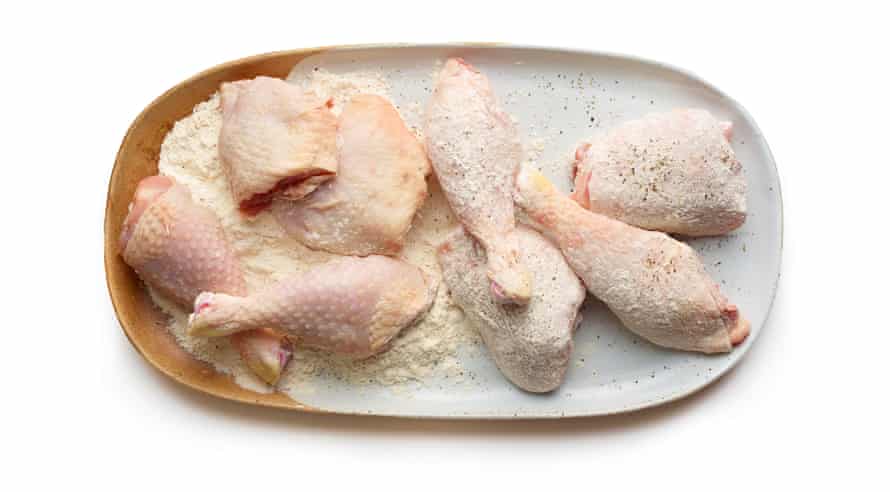
2 Flour the chicken
Cover a small plate with flour (any sort will do) and season generously. Heat the butter and oil in a large, heavy-based casserole (for which you have a lid) on a medium-high heat. (Alternatively, use a frying pan and transfer the stew to a saucepan in step 7.) Roll the chicken in flour to coat.
3 Brown the chicken
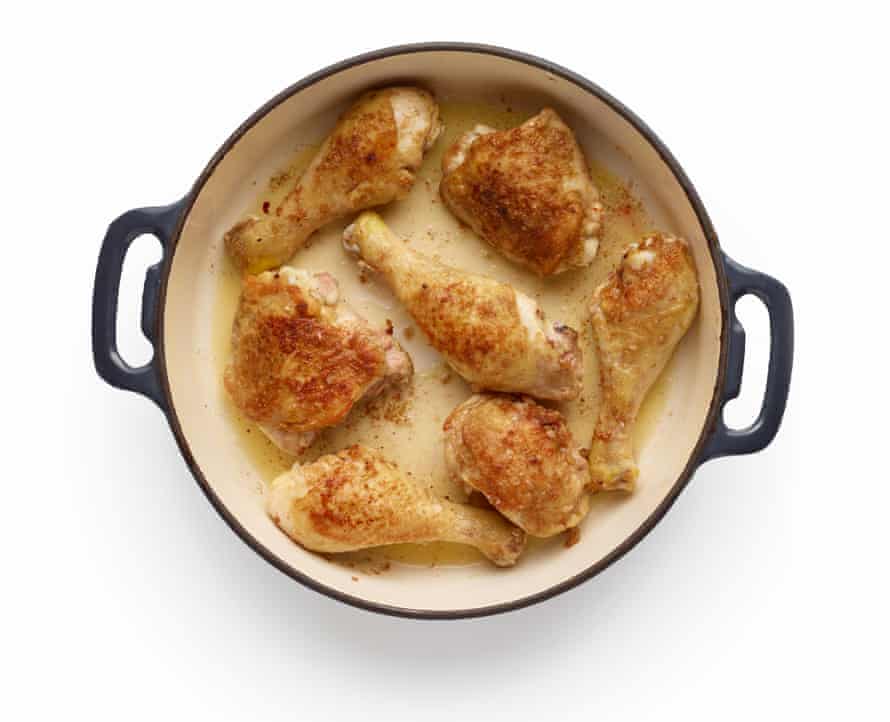
Fry the chicken in batches, being careful not to overcrowd the pan, because that will cause the meat to steam rather than fry, until nicely browned all over, then remove from the pan and set aside.
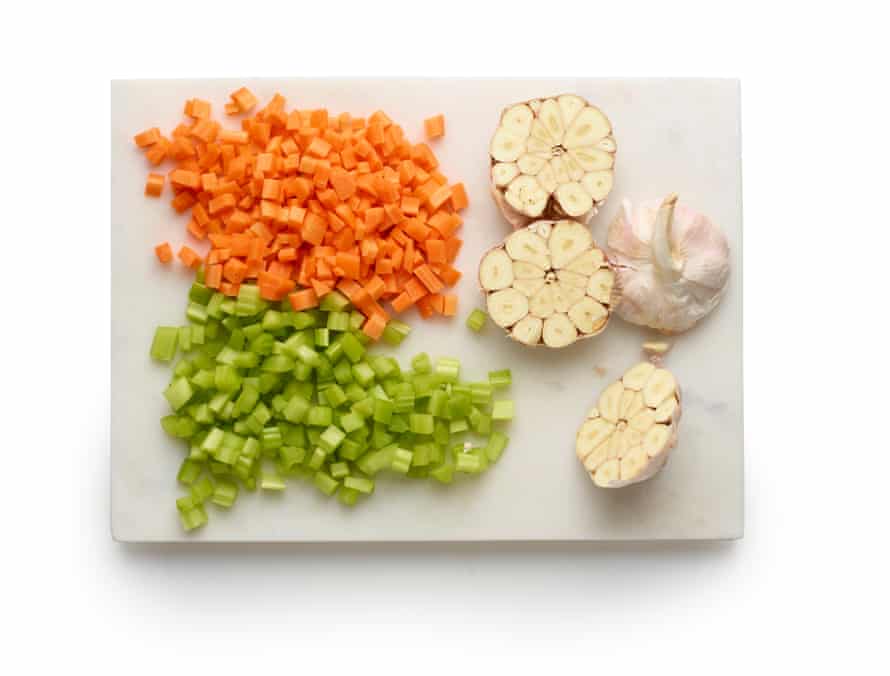
While the chicken is cooking, cut the garlic heads in half horizontally and peel and cut the carrot and celery into fairly fine dice.
4 Brown the soffrito
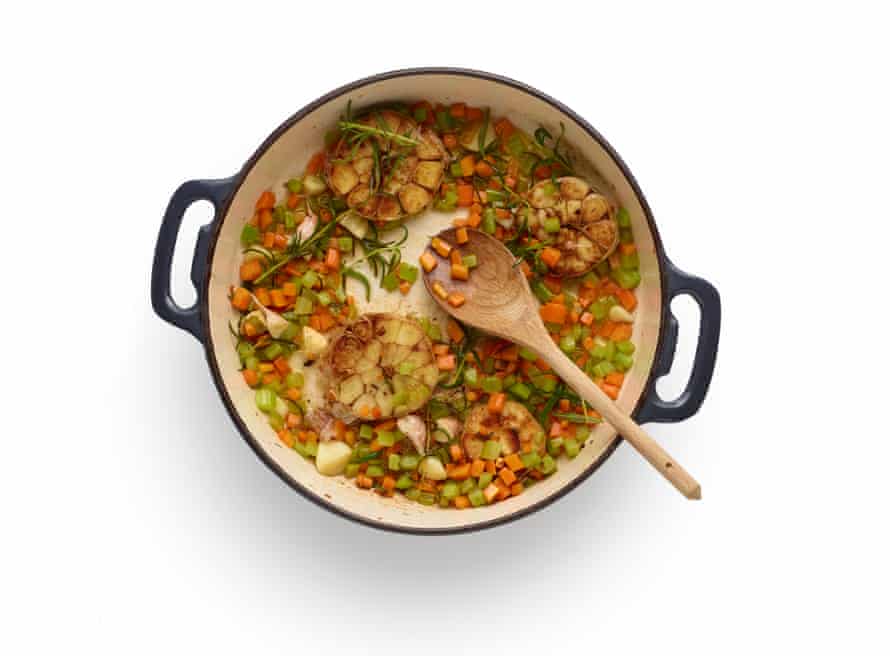
Put the diced vegetables, halved garlic heads (skin and all) and rosemary in the casserole, turn down the heat slightly and fry, stirring regularly, for a few minutes, until beginning to soften and colour; add a little more oil if the veg looks likely to catch and burn.
5 Add the wine and deglaze the pan
Turn the heat back up a little, pour in the wine, then scrape the bottom of the pan to dislodge any crusty bits of flour. Bring to a simmer, then leave to bubble away until well reduced – there should be only a spoonful or two left. (Note: you can use red wine, vermouth or dry sherry, if you prefer.)
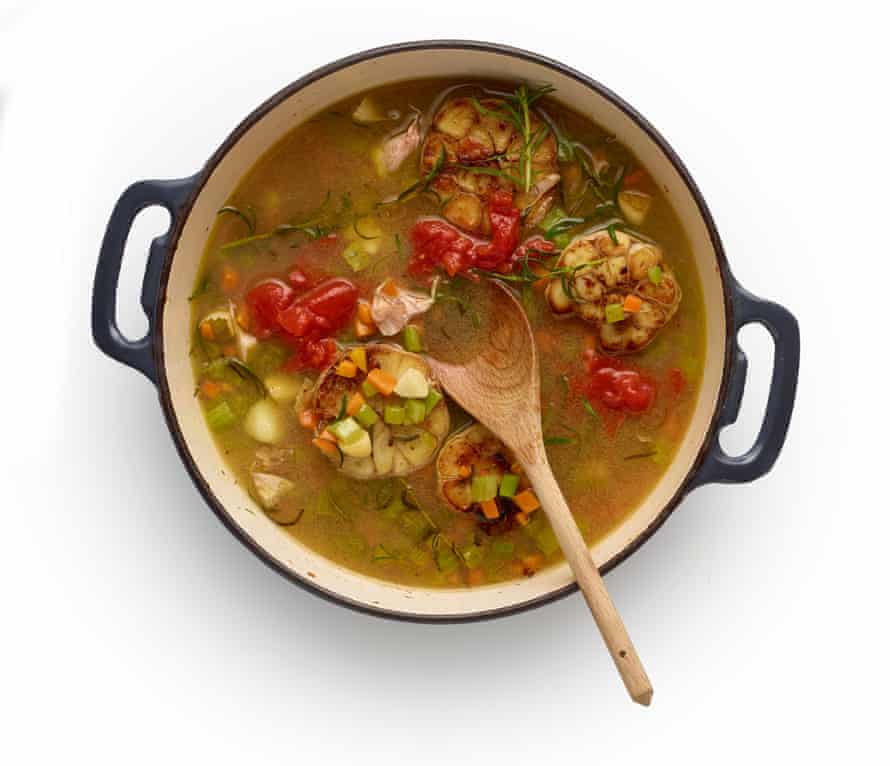
6 Pour in the stock and tomatoes
Stir in the stock and tomatoes, and bring up to a simmer; if using whole tinned tomatoes, roughly mash them with a fork to break them up a bit. In summer, you could use good, ripe, fresh tomatoes instead, grated on the large holes of a box grater to remove the skins.
7 Return the chicken to the pot
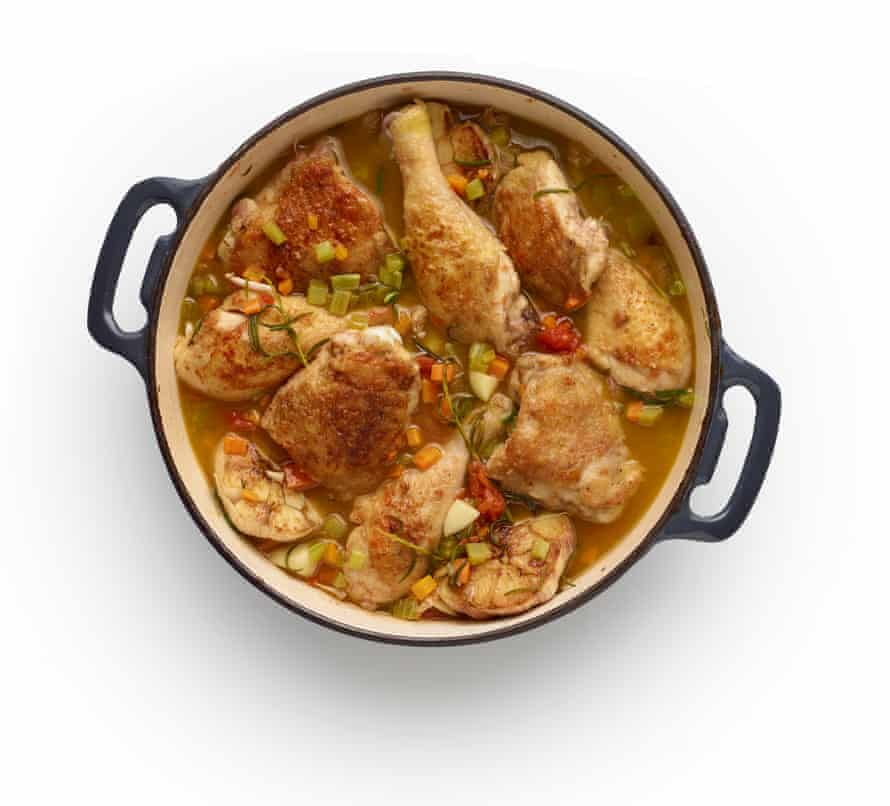
Put the chicken back in the pan, pushing the pieces down into the sauce. Once the sauce is bubbling away again, cover tightly, turn down the heat and leave to cook quietly for about 45 minutes, or until the meat is falling from the bone. (If using smaller birds, check after 30 minutes.)
8 Reduce the sauce, if need be
If the sauce is still fairly liquid once the meat is done – which is likely if you’ve reduced the cooking time to account for smaller game birds – take out the meat, cover to keep warm, then turn up the heat and leave the sauce to bubble away until thickened. Either way, season to taste once you’re happy with the consistency.
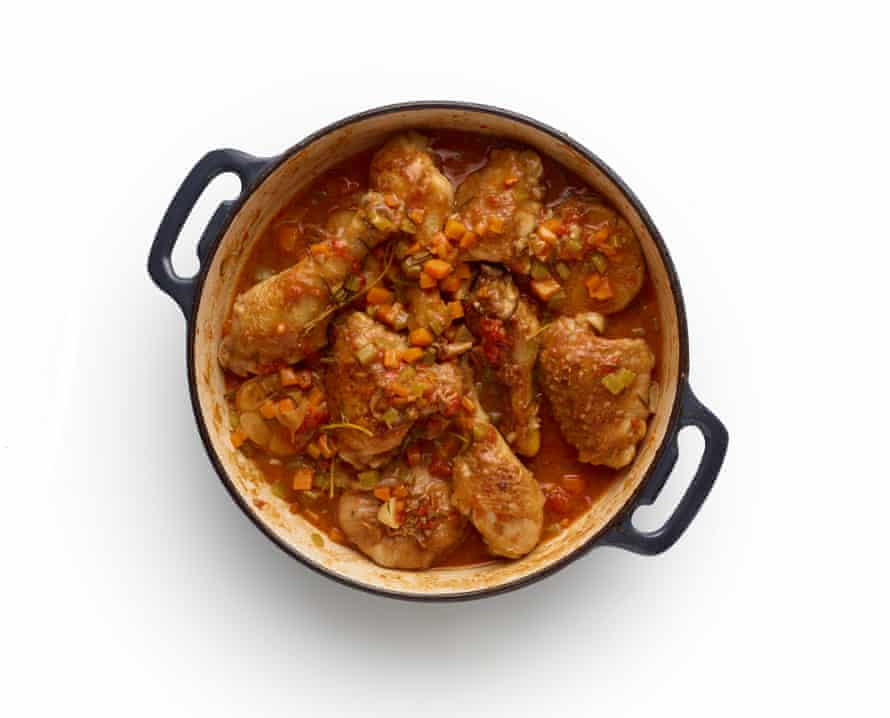
9 Serve on polenta, mash or rice
You may wish to strip the meat off the bones and stir it back into the sauce before serving to small children or the less dextrous, though otherwise I wouldn’t bother. I like this with polenta and a green salad, but mashed potato or buttered rice and steamed vegetables would also be fine accompaniments.
Source: This post first appeared on The Guardian










